Vikings And The Runic Calendar
AncientPages.com - The Vikings used a Runic calendar often written on parchment or carved onto staves of wood, bone, or horn. The year was divided into moon phases and the calendar reflected the seasons.
Sometimes, during summer it was difficult to observe the Moon because nights are so bright in Scandinavia that it is almost impossible to spot the Moon, especially in the northern parts.
Detail of a Runic Calendar, showing the three rows of symbols. Based on page 104 of F.E. Farwerck's Noord-Europese Mysteriën. Image credit: Wikipedia
The Vikings also observed how high the sun was in the sky because like all people they depended on weather for their survival. The year was divided into two equally long periods – summer and winter. A person’s age was counted in the number of winters he had lived.
The oldest discovered Runic calendar is the Nyköping staff from Sweden. Archaeologists and historians, think it is from the 13th century. Most Runic calendars are from the 16th and the 17th centuries.
Worm’s Norwegian runic calendar described in his book Fasti Danici dating back to 1643.
The drawing only shows the winter season lasting from 14 October to 13 April. The summer season on the other side of the bone from a whale or big fish was never copied, and both the pendant and the calendar have unfortunately been lost.
A typical Runic calendar consisted of several horizontal lines of symbols, one above the other. Special days like solstices, equinoxes, and celebrations were marked with additional lines of symbols. The Norse calendar system was also created using the Younger Futhark alphabet combined with three additional symbols, giving every day of the year a corresponding rune or combination of runes.
See also:
Runes: Facts And History About Odin’s Secret Language
Unravelling The Mystery Of The Ulfberht Sword – An Ancient Viking Artifact Far Ahead Of Its Time
The darkest period was named “Skammdegí” (the Dark Days) and the year’s brightest period “Nóttleysa”, meaning “insomnia” that many Scandinavians still experience today.
The winter months are Gormánuður, Ýlir, Mörsugur, Þorri, Goa and Einmánuður.
The summer months are Harpa, Skerpla, Sólmánuður, Heyannir, Tvímánuður and Haustmánuður.
Some years it may look as if it has been an additional 13th month to adjust the calendar: Silðemanuður (the Late Month).
The Runic calendar is a perpetual calendar which means it was designed to be valid for many years and allow the calculation of the day of the week for a given date in the future.
Copyright © AncientPages.com All rights reserved. This material may not be published, broadcast, rewritten or redistributed in whole or part without the express written permission of AncientPages.com
Expand for referencesReferences:
Thor News – The Viking Calendar
More From Ancient Pages
-
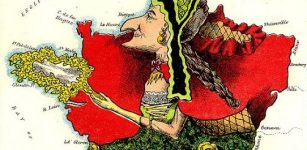 Strangest Maps Ever Created – You Have Never Seen Our World Like This!
Artifacts | Jun 25, 2014
Strangest Maps Ever Created – You Have Never Seen Our World Like This!
Artifacts | Jun 25, 2014 -
 Treasure Hunters Encounter Something Unexplained In The Arizona Mountains
Featured Stories | Apr 7, 2022
Treasure Hunters Encounter Something Unexplained In The Arizona Mountains
Featured Stories | Apr 7, 2022 -
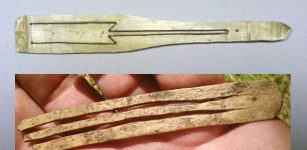 Jew’s Harps: Old Musical Instruments Discovered In Altai Mountains
Archaeology | Jan 9, 2018
Jew’s Harps: Old Musical Instruments Discovered In Altai Mountains
Archaeology | Jan 9, 2018 -
 New York’s Queen Of Thieves Fredericka Mandelbaum Opened Marm’s Grand Street School For Criminals
Featured Stories | Jul 24, 2024
New York’s Queen Of Thieves Fredericka Mandelbaum Opened Marm’s Grand Street School For Criminals
Featured Stories | Jul 24, 2024 -
 Draugr – Vikings Feared This Ugly Living Dead With Prophetic Visions
Featured Stories | May 24, 2020
Draugr – Vikings Feared This Ugly Living Dead With Prophetic Visions
Featured Stories | May 24, 2020 -
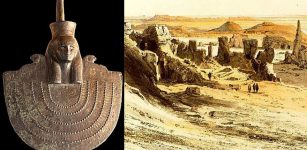 City Of Sais: Prehistoric Prestigious Cult Center Of Northern Egypt
Featured Stories | Oct 31, 2016
City Of Sais: Prehistoric Prestigious Cult Center Of Northern Egypt
Featured Stories | Oct 31, 2016 -
 Ancient Petroglyphs Of Cholpon-Ata And Mysterious Balbals Figures That Guard Grave Sites, Kyrgyzstan
Featured Stories | Aug 24, 2015
Ancient Petroglyphs Of Cholpon-Ata And Mysterious Balbals Figures That Guard Grave Sites, Kyrgyzstan
Featured Stories | Aug 24, 2015 -
 10 Norse Gods Who Vikings Gained Strength From
Featured Stories | May 14, 2018
10 Norse Gods Who Vikings Gained Strength From
Featured Stories | May 14, 2018 -
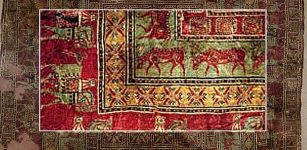 Pazyryk Carpet Found In Scythian Tomb Considered The Oldest Carpet In The World
Artifacts | Oct 5, 2016
Pazyryk Carpet Found In Scythian Tomb Considered The Oldest Carpet In The World
Artifacts | Oct 5, 2016 -
 Something Unexplained Is Happening In Ancient English Caves – Reports From Numerous People
Featured Stories | Oct 22, 2024
Something Unexplained Is Happening In Ancient English Caves – Reports From Numerous People
Featured Stories | Oct 22, 2024 -
 Charles VI Of France – The King Who Was Made Of Glass
Featured Stories | Jan 22, 2016
Charles VI Of France – The King Who Was Made Of Glass
Featured Stories | Jan 22, 2016 -
 Mada’in Saleh: Magnificent Timeless Rock-Cut Tombs And Monuments In The Desert
Civilizations | Oct 30, 2018
Mada’in Saleh: Magnificent Timeless Rock-Cut Tombs And Monuments In The Desert
Civilizations | Oct 30, 2018 -
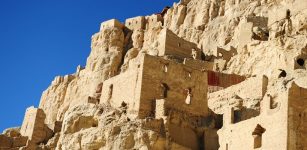 Ruins Of The Mysterious Kingdom Of Guge That Suddenly Vanished Overnight
Civilizations | Apr 10, 2021
Ruins Of The Mysterious Kingdom Of Guge That Suddenly Vanished Overnight
Civilizations | Apr 10, 2021 -
 Native American Legend Of Apotamkin Teaches Children Obedience
Featured Stories | May 14, 2019
Native American Legend Of Apotamkin Teaches Children Obedience
Featured Stories | May 14, 2019 -
 Viking Grave And Sword Discovered In Norwegian Garden
Archaeology | Jul 3, 2023
Viking Grave And Sword Discovered In Norwegian Garden
Archaeology | Jul 3, 2023 -
 Mystery Of Ancient Language PIE From Which Half Of All Languages Originate
Featured Stories | Apr 3, 2017
Mystery Of Ancient Language PIE From Which Half Of All Languages Originate
Featured Stories | Apr 3, 2017 -
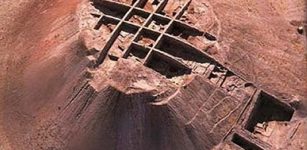 Norsuntepe – Little-Known Mysterious Prehistoric Site In Anatolia, Turkey: Why Was It Abandoned And Destroyed By Fire?
Civilizations | Mar 13, 2014
Norsuntepe – Little-Known Mysterious Prehistoric Site In Anatolia, Turkey: Why Was It Abandoned And Destroyed By Fire?
Civilizations | Mar 13, 2014 -
 Lazarus – An Obscure Biblical Figure
Biblical Mysteries | May 3, 2019
Lazarus – An Obscure Biblical Figure
Biblical Mysteries | May 3, 2019 -
 The Perplexing Story Of The Seven Continents And The Seven Mysterious Races – Can The Past Foretell The Future? – Part 2
Ancient and Unexplained Mysteries Library - Premium Content Preview | May 15, 2022
The Perplexing Story Of The Seven Continents And The Seven Mysterious Races – Can The Past Foretell The Future? – Part 2
Ancient and Unexplained Mysteries Library - Premium Content Preview | May 15, 2022 -
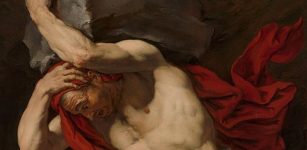 Why Did God Zeus Give King Sisyphus An Eternal Punishment?
Featured Stories | Sep 2, 2019
Why Did God Zeus Give King Sisyphus An Eternal Punishment?
Featured Stories | Sep 2, 2019




